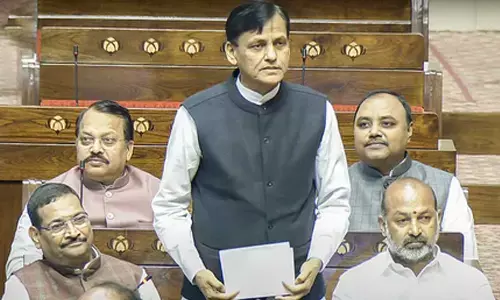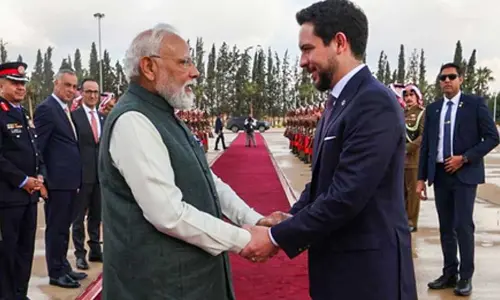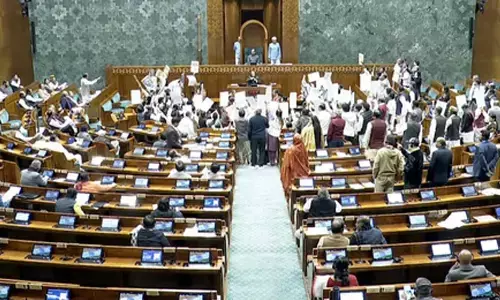Development Financial Institutions: A panacea for all problems

The global financial crisis of 2008 has shown that development banking is still relevant for the financial system In India, however, government is still shying away from bringing Development Financial Institutions DFIs back into the financial system
The global financial crisis of 2008 has shown that development banking is still relevant for the financial system. In India, however, government is still shying away from bringing Development Financial Institutions (DFIs) back into the financial system.
India currently stands as the fastest growing economy in the world. To sustain rapid growth, it has to address the need for infrastructure investment because it is a crucial sector for growth and any roadblock can adversely impact the overall growth of the economy.
Finance Minister is on record stating that the country requires investments worth an estimated Rs 43 lakh crore (about $646 billion) in infrastructure over the next five years. As per Global Infra Outlook Report, 2018 India needs around $4.5 trillion in the next 25 years for infrastructure development but will face a funding gap of $526 billion.
Outside of budgetary support, which accounts for about 45 per cent of the total infrastructure spending, banks have been the largest source of finance (about 25 per cent) so far.
However, banks are struggling to resolve the mounting gross NPAs worth Rs 10.17 lakh crore (as of March 2018). Therefore, the question is whether the currently mismanaged banking system will be able to meet the challenge to finance infrastructure development.
Financing of the infrastructure sector of this magnitude requires ingenious solutions. One such solution can be the tried and tested model of development banking, which has not got the attention it deserves.
Evolution and demise of DFIs
DFIs were an outcome of a major strategic decision when the policymakers decided that such institutions were essential for giving a thrust to economic growth. The mandate was to make long and medium-term loans readily available to industrial concerns in India as banks were unable to meet the requirement. These DFIs were, therefore, created to be the “gap fillers”.
The DFIs could access concessional finance from the RBI through various long-term operations funds, enabling corporate borrowers to get loans at cheaper rates. Thus, the DFIs played a crucial role in filling the gap for funds for the promotion, development and financing of industries. Over the period, they also enlarged the scope of their activities.
However, the introduction of New Economic Policy in 1991 changed the picture completely. The government-guaranteed bond quota, the major source of financing for DFIs, and the tax-free status of the loan was withdrawn.
The DFIs were thus forced to raise funds at market rates of interest and work on commercial lines in accordance with the banks. The consortium model, which was the hallmark of their operations also collapsed. Thus, notwithstanding a considerable increase in their cost of funds, DFIs were also forced to lend at extremely competitive rates which resulted in a fall in their growth and profitability.
During the liberalised regime, the private and public sectors were expected to work together on the basis of the PPP model. Plans were also afoot to develop the corporate bond market and use it to finance green field projects. However, neither the PPP model nor the corporate bond market proved effective in supporting infra and greenfield projects.
New Age DFIs
Post the launch of the new economic policy in 1991, infrastructure financing became smaller whereas India continued to grow. About three decades after the implementation of the Narsimham Committee recommendations, the country needs to rethink the method of financing infrastructure, which has already suffered from substantial deficit in terms of capacities and efficiencies.
In addition, projects across industries such as steel, cement, pharmaceuticals, IT parks, real estate, roads, airports, among others need end-to-end project financing solutions. The Indian economy is gradually becoming a high-cost economy, with both size of projects and cost of labour increasing. However, there is no organisation that is earmarked to fund these projects. Banks are unable to fill this gap for funds as they face an asset-liability mismatch.
We need financial institutions outside the banking sector for long-term funding of projects and the way forward is to shift focus again on the DFIs that can leverage cheap capital to contribute to the large-scale expansion of entrepreneurship and industrial development across all sectors of Indian economy including priority sectors such as energy, roads, highways, ports, housing and other greenfield infrastructure projects.
India, like other developing countries, such as China (CDB), Brazil (BNDES), Korea (KDB), Japan (DBJ), Malaysia SDB), and Nigeria (DBN), also requires DFIs to support infrastructure, greenfield projects, and industries.
The government should explore the possibilities to create two DFIs with ample financial power of global size - one for industrial development and the other for infrastructure development.
For industrial development, IFCI can once again take up the role of development finance and IFCI can use its project financing strength in order to finance new projects, which can make a huge contribution to creating millions of jobs in a high-cost economy like India. The merger of IIFCL, IDFC, PFC, and REC will help to cater to the huge fund requirements of long-gestation infrastructure projects.
With the rise of pension and insurance funds, it should not be very difficult for the DFIs to raise long-term funds. The DFIs could also be given regulatory exceptions, as well as budgetary support of two to three per cent, which is not very high for the economy of our size.
The DFIs should also focus on raising funds on the strength of their balance sheet. These DFIs can work on a consortium basis and provide funds and service to the long-term projects which commercial banks are unable to sponsor. The DFIs can also provide funds to the highly capital-intensive industrial sector.
DFIs can also play a key role in building capacities and more so if we have to take on the manufacturing might of China. One way is to create special industrial corridors and for this again, funds would be required. The need for these funds can be fulfilled by DFIs.
In addition, retail investors now wish to extend their saving avenues from the traditional commercial banks and mutual funds. What India needs is a vibrant debt market and one way forward is to breathe life into our development finance institutions. (The author is Associate Professor of Finance at MDI Gurgaon)
By Dr Shailendra K Rai


















